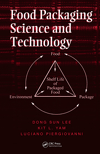Industry Q&A: Slitting/Rewinding
Slitting/Rewinding Technology Focuses on Increased Productivity, Sustainability, Ergonomics

Barrie Homewood, Titan Slitter Rewinders/Atlas Converting Equipment Ltd., talks new trends, tension control, sustainability, and more.
Q: Is there anything new in the world of slitting/rewinding or any trends that you’re seeing?
A: With the advancement of printing and laminating technologies in terms of print quality, waste reduction and ease of operation, converters are now looking further downstream in the production process for further cost savings and improvements in productivity. Converters now seek the same savings gained upstream in the slitter department as well, whether through more automation of reel handling or a consolidation of the number of slitter/rewinders required.
Due to potential inefficiencies of the slitting and rewinding process, there are considerable savings which can be made. A simple example would be the current necessity to stop the slitting process for every “flag” (i.e. print, lamination or splice defect) in the parent roll. With today’s 100% inspection systems, it is possible to electronically map the roll directly from the printing process, review the defects and allow the inspection system to take control of the slitter. This enables automatic, fast and accurate stopping of the slitter for cross web faults or to allow lane faults through the slitter to be edited off-line after slitting – which increases the slitter efficiency multi-fold.
Q: How important is monitoring tension control during the slitting/rewinding process?
A: Tension control is one of the most important functions of the slitter/rewinder and critical to converters’ customers. Often, many problems will not be detected until the end user is packaging a product on high-speed packaging lines. Here, tension variation throughout the reel of packaging material can cause significant production issues on packaging machinery. Control and adjustment of tension in the slitting and rewinding process has evolved dramatically and today’s modern automated systems eliminate the guess work of adjustment. This ensures uniform web control with feedback to the differential rewind shafts.
Q: Other than keeping an eye on tension, are there any other factors that converters should be wary of in the process to ensure the best end result?
A: Slitting accuracy and web guidance are also vital functions of the slitting and rewinding process. If the guiding system is not maintaining control
of the web position through the knives, then a complete job can be wasted. If the knife positions are not set accurately, then the same result will happen.
Q: What are some features that a converter should look out for when shopping new slitter/rewinders?
A: When considering investment in new slitting and rewinding technology, converters need to take into consideration their own production requirements and configure the machine to meet the following demands:
- What size (diameter) parent rolls are required? How many flags (faults) on average does each roll contain?
- What are the characteristics of the material to be processed? Are materials extendable? What is the minimum and maximum thickness of materials? Are there any adhesive or cold-seal applications?
- Slit width requirements — what are the minimum and maximum slit widths required for processing?
- Do additional processes need to be included in the slitting operation? (Eg. Laser scoring, laser perforation or web treatment?)
- Logistics — how will parent rolls be transported from WIP to the slitter? Are product samples required from each reel? What label sizes are required and where should they be applied? How will the slit reels be unloaded and palletized?
Q: It seems that sustainability is becoming an ever-increasing buzz word in the flexible packaging market — are slitters/rewinders being developed with this in mind? If so, how?
A: Titan first considered sustainability with the introduction of the first generation Titan ER610 compact duplex slitter back in 2007 — indeed the “ER” stands for “ecological rewinder!” This machine incorporates design features to reduce energy consumption and shipping/logistics requirements and also to reduce operator intervention — all of which reduces the carbon footprint of the machine.
These features have now been incorporated into all Titan models since the ER610 was introduced and can now be seen in the latest generation machine — the Titan SR800 Duplex slitter/rewinder which is just being introduced to the market.
The SR800 is a direct replacement of the highly successful SR8 Series slitter, but offers even greater productivity, reduced energy consumption and even better ergonomics for the operator.
Atlas Converting
(973) 204-2488
www.atlasconverting.com
Looking for a reprint of this article?
From high-res PDFs to custom plaques, order your copy today!









